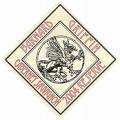Growers conference in February introduced many to the Columbia Valley.
I finally have some time to post to this blog, so lets catch up. Last month the annual Washington Association of Wine Grape Growers Meeting was held in Kennewick, Washington. Growers and winemakers from the U.S. and Canada attended. And local growers and winemakers presented. I personally had some time to visit with four growers from the NAPA Valley. They appeard a bit dazed and overwhelmed when I met with them after the conference. They had questions about the Columbia Valley, climate, soil and appellations. They did not believe everything I told them and they seemed doubtful about the whole Washington state wine phenomena.
But, as they say, the truth is in the tasting. They were politely interested in white wines, but unimpressed. They were very interested in red wines and were blown away by a 2004 Barnard Griffin Reserve Cabernet Sauvignon. I swear their eyes popped open at the same time - looks were exchanged, heads nodded at each other, oohs and ahhs left their lips as reality set in.
Is the Columbia Valley one of the best locations in the world to grow grapes? Are some of the best winemakers in the world in Washington state? And are some of the best wines in the world being made in Washington state? Yes, yes, and yes! Go taste for yourself if you don't believe.
These four Napa Valley growers took a case of Washington reds home with them for further evaluation - it was a very heated discussion which wines they would take - yes they each took some of the B.G. Reserve Cab Sav. Will this affect how they grow their own grapes? Or will there be four growers and their families discussing a move to Washington state?
FYI: The 2004 Barnard Griffin Reserve Cabernet Sauvignon, won Gold at the 2006 L.A. County Fair Wines of the World Competition, Gold at the 2006 West Coast Wine Competition and Double Gold and Best of Class at the 2006 Tri-Cities Wine Festival (held in November and worth attending). This is truly a world-class Cabernet Sauvignon.

FYI: The Columbia Valley is blessed with a semi-arid desert climate, sandy/silty soil, basalt and clay deposits, we receive 1-2 hours additional sunlight in the summer than California, and because we are in the northwest and desert, our summer temperatures during the day range from 80 - 100 degrees farenheit, but drop at night by 30 to 40 degrees which helps the grapes cool and preserve/develop their acidity. This is also a windy location and a lot of sand and dust is blown around at times, which I've been told is useful for reducing vine pests and toughening the grape skins (skins = flavor). Soil, dry climate, wind, hot days and cool nights, skilled growers and talented winemakers, what a great combination for world-class wine.
Cheers!